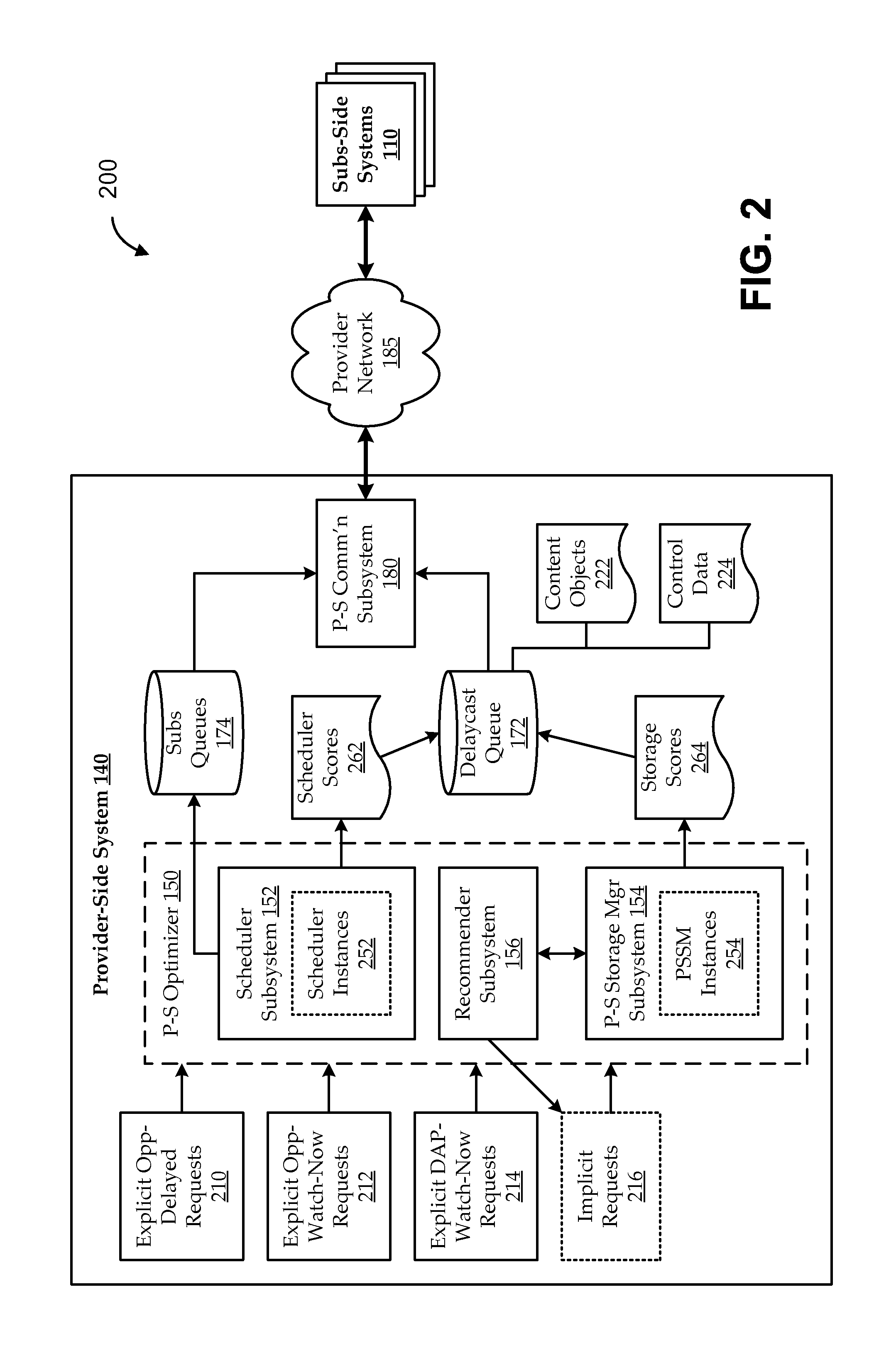Delaycast queue prioritization
a delaycast and queue technology, applied in the field of communication systems, can solve the problems that the communication infrastructure does not typically support opportunistic exploitation of dynamically changing resource availability and consumer behaviors, and achieve the effects of optimizing subscriber engagement, optimizing resource utilization, and facilitating subscriber access
- Summary
- Abstract
- Description
- Claims
- Application Information
AI Technical Summary
Benefits of technology
Problems solved by technology
Method used
Image
Examples
Embodiment Construction
[0023]The desires of content providers to maximize content offerings and access to consumers are often in direct conflict with desires of network resource providers to service their customer's with limited communications resources. A number of traditional techniques exist for increasing consumer engagement with content or for optimizing utilization of communications resources. However, these techniques generally rely on limited information and have limited effect, for example, due to constant and dynamic changes in resource availability and consumer behavior across the communications infrastructure. Techniques discussed herein opportunistically exploit these dynamic changes in an attempt to maximize consumer engagement and satisfaction within a limited communications resource context.
[0024]In one illustrative implementation, subscribers to a media plan request media content objects. Sortie of that content is identified as “delayable” content, such that it can be queued for opportuni...
PUM
 Login to View More
Login to View More Abstract
Description
Claims
Application Information
 Login to View More
Login to View More - R&D
- Intellectual Property
- Life Sciences
- Materials
- Tech Scout
- Unparalleled Data Quality
- Higher Quality Content
- 60% Fewer Hallucinations
Browse by: Latest US Patents, China's latest patents, Technical Efficacy Thesaurus, Application Domain, Technology Topic, Popular Technical Reports.
© 2025 PatSnap. All rights reserved.Legal|Privacy policy|Modern Slavery Act Transparency Statement|Sitemap|About US| Contact US: help@patsnap.com



